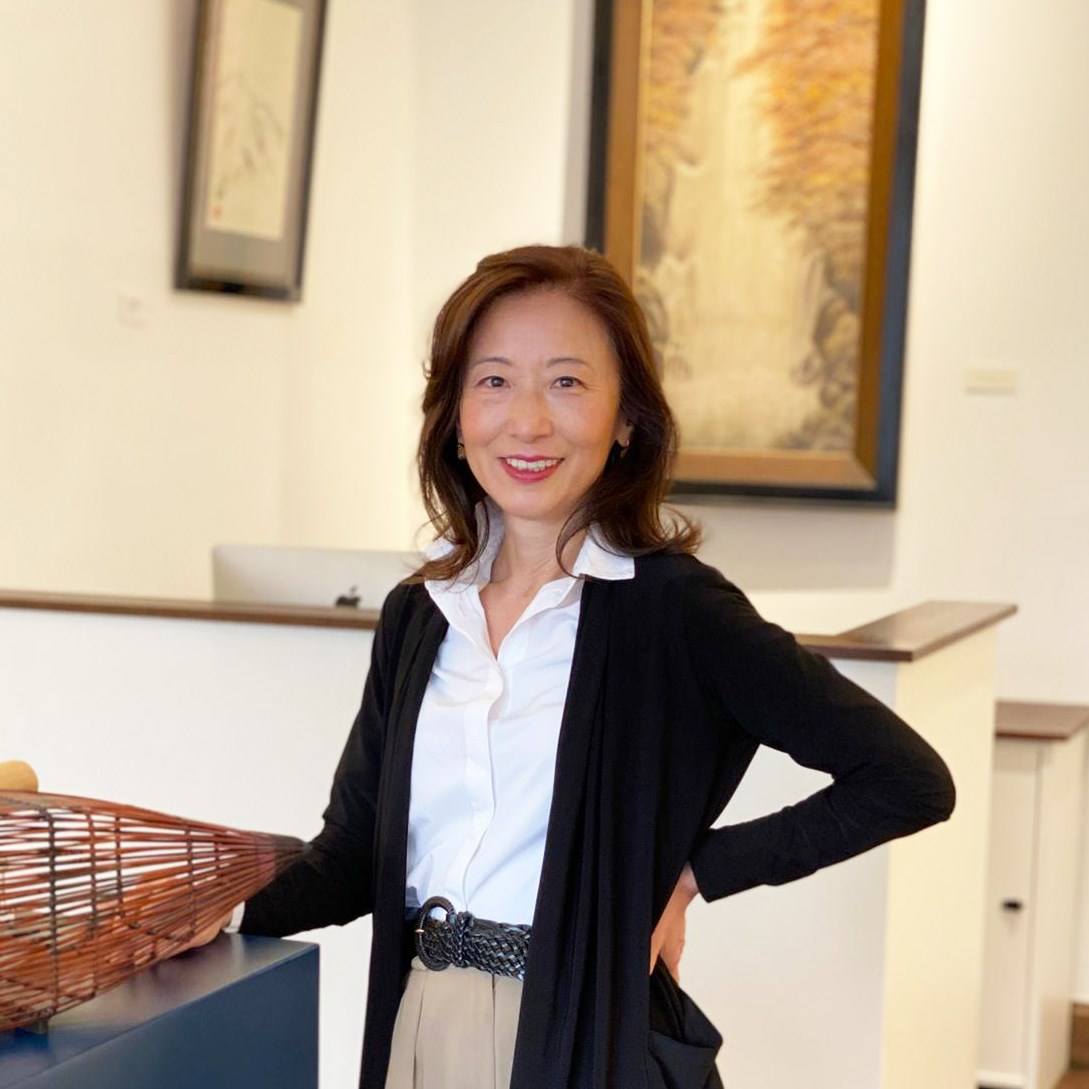Japanese Ceramics
13 June 2024
ShareA Profile of Malcolm Fairley and Grace Tsumugi
By Emma Crichton-MillerEmma Crichton-Miller is Editor-in-Chief of The Design Edit, and an arts journalist, editor and writer. She contributes regularly to the Financial Times and is a columnist on Apollo Magazine.
Grace Tsumugi and Malcolm Fairley are long-time members of St.James’s dealer community. They have carved out a distinctive niche in the finest Japanese applied arts of the late Edo and Meiji periods. Fairley leans towards cloisonné enamels, those richly coloured, highly polished, “Shippo” wares, created by applying fine metal wires to a base material (often copper or bronze) to delineate a design which is then filled with different coloured enamels and fired. Tsumugi’s special focus is lacquer. But between them they also handle the most refined and skilfully accomplished metalwork, porcelain, textiles, paintings and screens of the period.
The two stumbled upon this area by accident. Malcolm Fairley was a furniture specialist at Sotheby’s Belgravia, who looked after all things nineteenth century. One day he walked through a Japanese sale: “The quality of the metal work and the enamels was so exceptional and much better than the European ones I was dealing with, so I moved departments.” By the early 1980s, the sector had taken off and in 1987, Fairley left Sotheby’s to join Barry Davies Oriental Art, one of the world’s leading dealers in Japanese art, who was then riding the wave of the flourishing international market.
Below Malcolm Fairley

Tsumugi meanwhile had moved to England to study contemporary art. She had worked for a museum briefly in Tokyo but at that time there were very few jobs in the field of antiques in Japan, so she had switched focus. To earn some money, however, she also began to work for Barry Davies, assisting with sales. Soon Tsumugi, Fairley and the curator Oliver Impey were set to work researching, cataloguing and building the world’s most outstanding collection of Japanese art of the Meiji period outside that of the Japanese Imperial family, assembled by Professor Sir David Nasser D. Khalili. Khalili had recognised that this sometimes neglected field represented a decisive moment in Japanese history. When the young Meiji Emperor assumed the throne in 1868, Japan’s new leaders saw in the historic skills of the metalworker, lacquerer, enameller and ceramic artist the way to compete in international markets. A style evolved blending traditional Japanese design with prevailing international taste, giving full scope to the refined craftsmanship nurtured during Japan’s centuries of isolation. Fairley explains: “A lot of the work was made for the eight big world exhibitions, visited by 8-10 million people. So it was a major form of currency for the Japanese. These were expensive objects.”
The three became experts in an under-researched field. Tsumugi says, “It was very interesting for me and for Malcolm to research something which people had not discovered before.” At the time, even Japanese curators turned their noses up at a field they regarded as tainted by its appeal to an international audience. There were few texts available and those only in Japanese. No one had attempted to distinguish between dross churned out at the time to feed an insatiable international appetite for Japanese art and design, and the finest pieces commissioned by the Imperial household and sought after by discerning Japanese collectors. It was with these latter works that Tsumugi and Fairley concerned themselves, developing their connoisseurship in the field.
Below Grace Tsumugi

They each opened galleries in the days when they could source new masterpieces regularly from old collections around the United Kingdom, in Europe and in Japan. Fairley has a particular admiration for cloisonné enamels because until the 1830s, the Japanese had very little expertise in the ancient medium. “Then in the 1830s one Kaji Tsunekichi started making objects and for the next thirty years it became very popular.” Within fifty years, from a standing start, Japanese enamellers had outstripped the world: “I don’t think there is any other art form you could say that about,” Fairley suggests. The masters in this field were Namikawa Yasuyuki (a former Samurai) and Namikawa Sosuke ( no relation), who became the most famous cloisonné artists of the 1890 to 1910 period. There were several major collectors in Japan, America and Europe. "The first exhibition I held as an independent dealer,” Fairley reports, “ I had 21 Namikawa Yusuyuki pieces and I think 8 Namikawa Sosuke pieces, including large panels. It was a different world. Nowadays if there is one piece that turns up somewhere we are on a plane or a train to look at it because there are so few perfect pieces on the market.”
Over the last ten years this scarcity has afflicted the entire field. Focusing only on immaculate examples from the finest artisans, however, Tsumugi and Fairley still have collectors keen to improve their collections.
At this year’s Treasure House Fair, the pair are sharing a stand to showcase the masterpieces they own in common. Among them will be a textile screen “which we had thought to keep for ourselves,” Tsmugi says, “but we haven’t got a wall big enough to display it on. A silk embroidery of a hawk. Dated 1900 to 1910. We found it in Japan in mint condition. This is very rare.” Another outstanding object is a large, elaborate gold lacquer cabinet (1870) by the master Harui Seizaburō, which it took the master five years to complete. Fairley says: “We will put on an exhibition of a quality that no other museum could achieve except the Imperial museum in Tokyo.”

